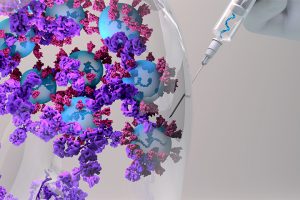The term “mRNA vaccine” only recently became part of our everyday vernacular, but the race to combat the COVID-19 pandemic has shed new light on a technology that has been the ace in the hole of cancer immunotherapy research for years. The use of messenger RNA in COVID vaccines has reintroduced what could be a game-changing element in the fight against cancer.
“A key characteristic of the messenger RNA technology is the versatility and the speed with which such vaccines can be developed,” said Uğur Şahin, founder and CEO of BioNTech. “This versatility allows for the tailoring of the individual vaccines and the development of these vaccines in an extremely fast fashion.”
BioNTech’s COVID and cancer vaccines both contain sequence-optimized RNA; the former incorporates corrective proteins and the latter programs the body to attack tumors through antigen expression. Şahin said that RNA vaccine research has mainly focused on improving potency because 20 years ago, vaccine vectors would not have allowed for such substantial immune responses.
The potency dilemma has stumped researchers, especially oncological scientists who need drawn-out results that can compete with the infamous stubbornness of cancer. Recent modifications to the vessel of delivery for vaccination may have helped chart a path forward. China’s National Center for Nanoscience and Technology (NCNST) introduced a hydrogel injection fitted with an mRNA vaccine and an immune system stimulant. In a trial conducted on melanoma-infected mice, the vaccine was effective for at least a month and halted further tumor growth and metastasis. It’s a promising result for researchers, as hydrogel housing methods may be the missing link to achieving long-term efficacy.
A brief connection with the immune system is enough for a COVID-19 vaccine to work its magic, but cancer treatment requires a much longer period of engagement and protracted contact with lymph nodes. The NCNST created its hydrogel to this end, with polyethylenimine to group mRNA for expedited translation and graphene oxide for increased dosage load potential. The vaccine’s anti-tumor CD8+ T cells are beefed up by Galderma’s TLR7/8 agonist resiquimod as an adjuvant.
BNT162b2 is not alone in appropriating cancer immunotherapy resources for COVID vaccine development, and conversely, the NCNST won’t be the last to do the opposite. No matter if it’s the use of genetic sequencing, viral expression vectors, or recombinant DNA protein, the precedent set by the oncological vaccine model now heavily shapes the landscape of worldwide COVID treatment. Breakthroughs in RNA development are hugely beneficial for vaccines across the board, so the ongoing attempts at perfecting the COVID vaccine will in turn pass the baton to cancer researchers with new tools at their disposal for improved care and healthier patients.























